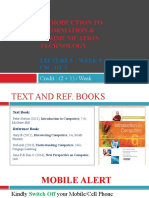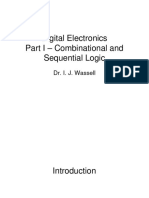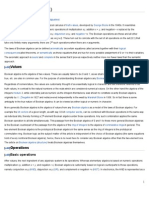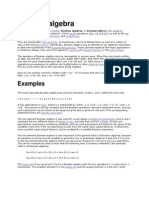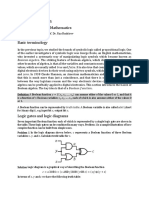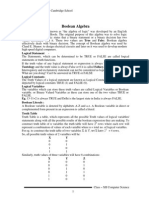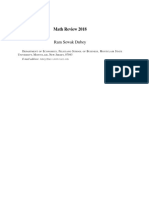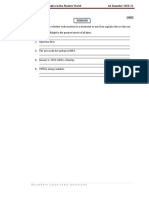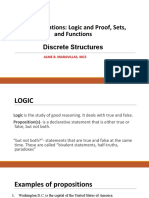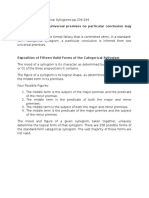0% found this document useful (0 votes)
7 views26 pages04 BooleanLogic
The document provides an overview of Boolean logic, developed by George Boole in 1854, which uses two values (True and False) and various operators to form logical expressions. It explains key concepts such as conjunction, disjunction, negation, and conditional statements, along with their truth tables and applications in computer programming. Additionally, it discusses how Boolean logic is essential for computer operations and circuit design, utilizing gate diagrams to illustrate the implementation of logical functions.
Uploaded by
bowdy.jamaleCopyright
© © All Rights Reserved
We take content rights seriously. If you suspect this is your content, claim it here.
Available Formats
Download as PDF, TXT or read online on Scribd
0% found this document useful (0 votes)
7 views26 pages04 BooleanLogic
The document provides an overview of Boolean logic, developed by George Boole in 1854, which uses two values (True and False) and various operators to form logical expressions. It explains key concepts such as conjunction, disjunction, negation, and conditional statements, along with their truth tables and applications in computer programming. Additionally, it discusses how Boolean logic is essential for computer operations and circuit design, utilizing gate diagrams to illustrate the implementation of logical functions.
Uploaded by
bowdy.jamaleCopyright
© © All Rights Reserved
We take content rights seriously. If you suspect this is your content, claim it here.
Available Formats
Download as PDF, TXT or read online on Scribd
/ 26


